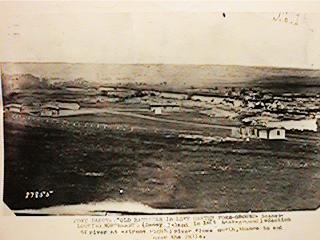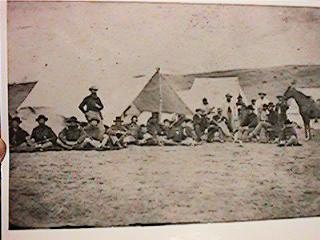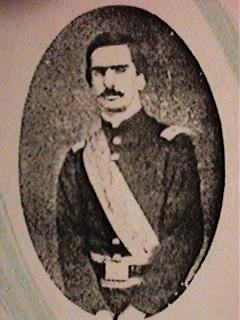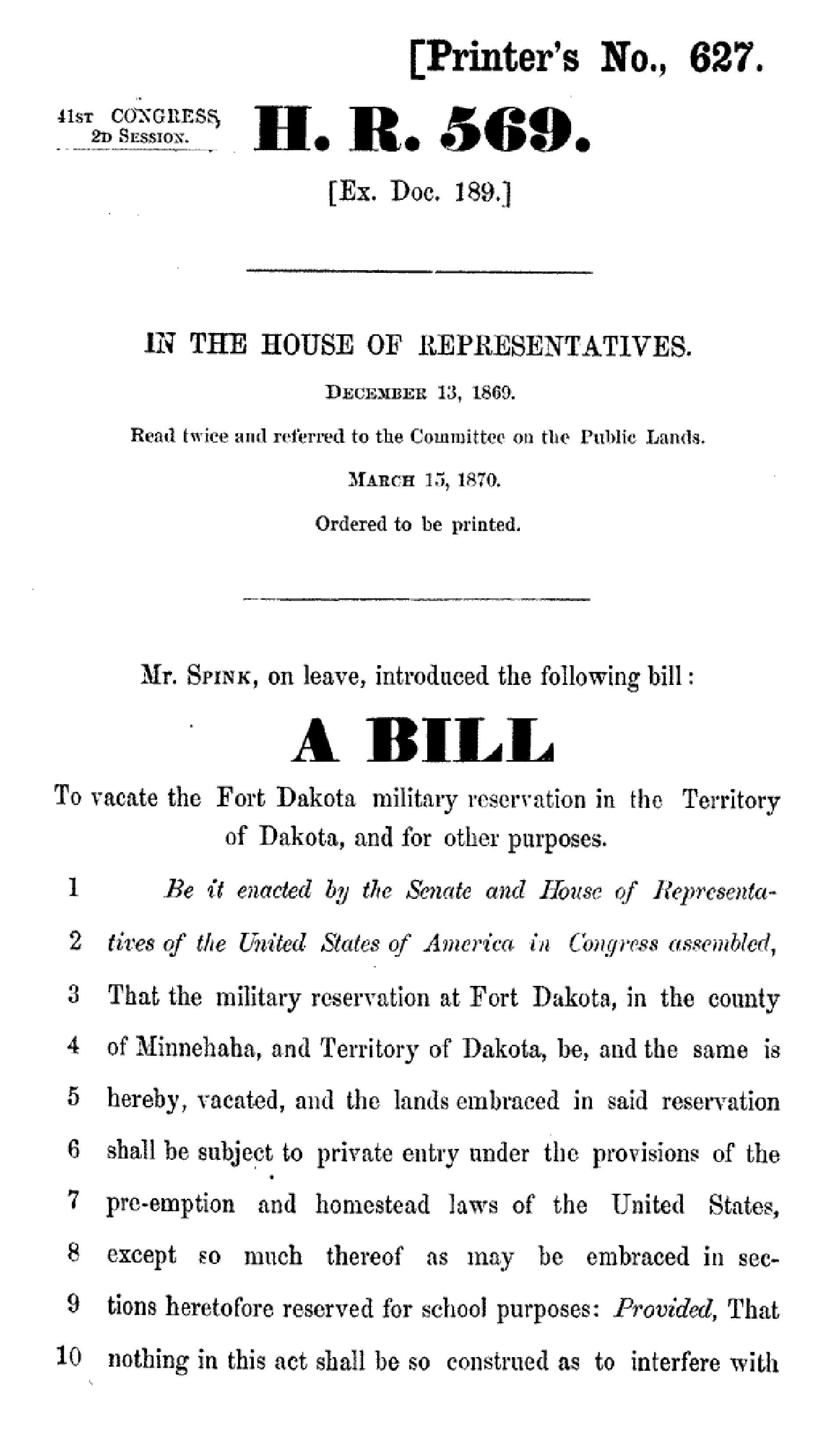
Although quiet when the Civil War began, Indian warfare emerged on the northern prairies in August of 1862, when the Santee Sioux broke out violently in Minnesota. This conflict quickly overlapped the artificial borders set up by the whites and spilled into Dakota Territory. Settlers throughout Dakota panicked and fled as rumors of war and its resulting atrocities reached settlements and farms. The thriving community of Sioux Falls, established in 1856, was one of the several communities in Dakota Territory abandoned during this time. The Sioux set the community on fire after it was abandoned and only one building survived.
| The Santee Sioux, who united with the western Sioux bands, had been driven west into Dakota Territory and were determined to save their homeland from encroaching settlers and broken treaties. During the Civil War, in 1863-1864 the U.S. Government assigned volunteer and state Infantry and Cavalry troops to campaign deep into Dakota territory to remove the Sioux threat on white settlements. These campaigns left the Sioux as bitter enemies to the whites. By 1865, Sioux and Cheyenne war parties raided through most of Dakota Territory. |
 Members of the 6th IA Cavalry Members of the 6th IA Cavalry On patrol somewhere in Dakota - Circa 1860's |
 Captain Daniel Eicher - 6th Iowa Cavalry Captain Daniel Eicher - 6th Iowa Cavalry
|
The United States government understood that a military presence in Dakota Territory would help settlers feel safe, and perhaps encourage others to move to the frontier. Therefore, a military post was established on the abandoned site of Sioux Falls City. On May 5th 1865, Lt. Colonel John Pattee of the 7th Iowa Volunteer Cavalry laid out the area for two posts, one at Sioux Falls, the other along Firesteel Creek. Pattee left Captain Daniel Eicker with a company of the 6th Iowa Volunteer Cavalry as the garrison of the post, which the volunteers dubbed 'Fort Brookings' after early settler W.W. Brookings. The men of the 6th were relieved by Company "M" of the 7th Iowa Volunteer Cavalry in the fall of 1865. They were soon joined by a company of Brackett's Minnesota Cavalry Battalion who wintered with them at the new fort. In the spring of 1866, the Minnesota Cavalry departed and were mustered out. The men of the 7th Iowa remained as the sole unit at the desolate post until the arrival of the 13th United States Infantry in June of 1866. . |
By late 1865, the Civil War had ended and most of the wartime volunteer and state units were withdrawn from Dakota Territory. These volunteers were replaced by hastily reorganized regiments of the regular Army, such as the 13th US Infantry. One company of this unit was transported by the steamer "Rubicon" to Sioux City, Iowa. From there they traveled outside the border of the United States of America into the Indian territory of Dakota at Fort Randall. Then, the troops marched another week to reach their final destination.
Upon their June 8, 1866 arrival, the 82 men of Company "D" relieved the remaining 19 ragged men of Company "M" 7th Iowa Cavalry. These men were eager to leave and be mustered out of service as soon as the fresh troops arrived.
| Upon their arrival, the members of the 13th found four buildings: two enlisted mens barracks, a stone commissary building, and a stable along the river. Their commander, Colonel Kilburn Knox, renamed the post Fort Dakota, and put his men to work, improving and enlarging the post. By the time the Federal Government closed the post three years later in 1869, there were eighteen buildings. . |
 Colonel Kilburn Knox - 13th US Inf. (Circa 1863) |
Illustration: soldier during 'fatigue duty'
